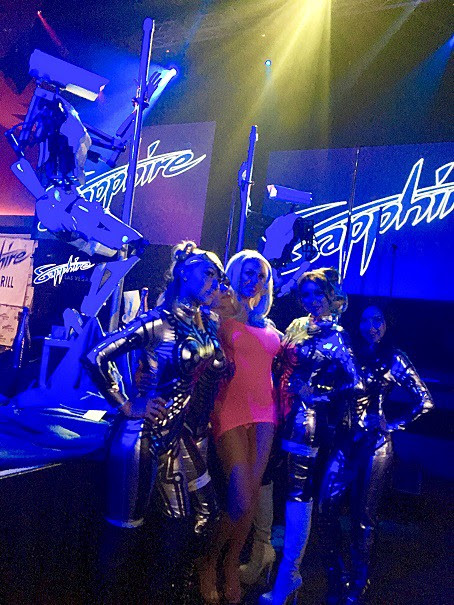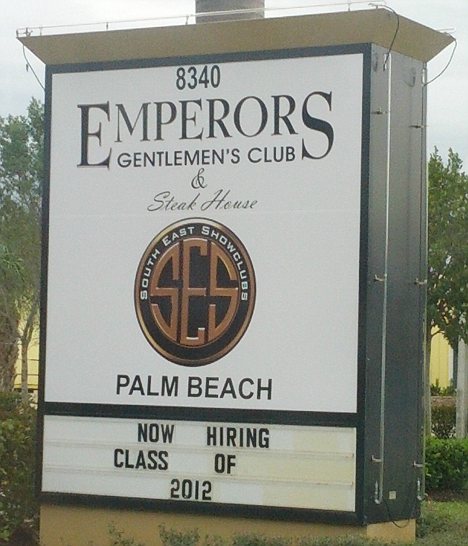I Partied With The Robot Strippers Before The CES

When hypnotizing videos of robot strippers went viral recently, the internet was abuzz. (At least it was in my circles, comprised primarily of current/former sex workers and horny writers who never miss an opportunity to crack a Philip K. Dick joke.) People marveled and hypothesized about the potential implications these gyrating mannequins might have on the strip club landscape: Were these robots here to replace ladies who dance for a living? Were men actually like, into this? Should your friendly neighborhood strippers start worrying about being usurped by rechargeable batteries and knees that will never need replacement? It seemed that everyone who encountered this quirky bit of tech-lore was either mesmerized, amused, or vaguely hostile to the idea; but was anyone actually turned on? (Turns out, the answer to all of these questions is basically: not really.)
An old friend with tech media connections was able to score an invite to an exclusive media-only event being held at Sapphire, a major pillar of the Vegas strip club scene. We were lucky enough to check out the robots up close and personal before they make their debut on the CES Expo floor later this week. I spoke with the robots’ creator, Giles Walker, about their inception and how they came to be the most buzzed-about attraction at the biggest tech event of the year.
Despite all of the jokes and speculation about emotionally-stunted nerds in basements building girlfriends for themselves, Walker doesn’t even come close to the socially-awkward engineer I had envisioned. In fact, he’s a British sculptor with deep roots in the London punk and art scenes. With his spiked ear-gauges and cheeky fedora, Walker looks more like the guy who wants to sell you rare Japanese Sex Pistols b-sides on eBay, not the Dr. Frankenstein of sexy late-stage capitalism. An active member of art collective, The Mutoid Waste Company, which erects guerrilla-art installations all over Europe, Walker first began incorporating motors into his found-object sculptures in the mid-1990s using scavenged parts from junkyards. “When I first started I was just a broke punk, you know? I didn’t have $10 in my pocket, so I had to use whatever I could find on the street.” Today, the robots are constructed using mannequin limbs, windshield-wiper motors, a gate-opening motor, and CCTV cameras.
The dancing fembot concept first began to take shape for Walker after the broadcast of an infamous “sexed up” report on British television convincing the nation to go to war in Iraq.At the time, Walker says, “I started noticing these CCTV surveillance cameras on every single street corner in London, it was nuts. And those things are total garbage! They don’t even protect people, they only protect f*ckin’ property!”


